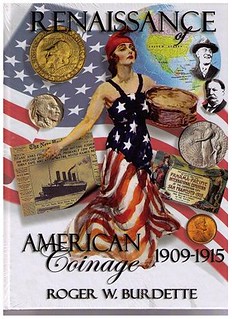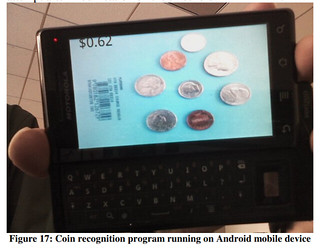
PREV ARTICLE
NEXT ARTICLE
FULL ISSUE
PREV FULL ISSUE
COMPUTERS AND CALCULATING COIN RADIUSWilliam Vanornum submitted these thoughts and questions on computers and coins. -Editor
Not knowing anything about this, I decided to see what more I could learn. I discovered David Lange's 7-1-2006 NGC posting on "What is Meant by Die Radius?" Mr. Lange noted that, "In short, die radius refers to the curvature of the die face." Starting with the 1936-40 Gobrech designs, noted Lange, U.S. designs started to show (a not always apparent) concavity on the doin, a result, of course, from convex die faces. Experimenting with different degrees of curvature, "would ultimately determine the best standard of filling the dies in a single blow from the press." [I'm going to do some observation using some well worn Large Cents from 1830s and 1840s--perhaps if I use a 20-power to view the edges this can be discerned, and another way might be to use a micrometer. I suspect this might be too hard to observe with these techniques] Pretty neat stuff--so I thought I'd try to find out more. Perhaps this is relevant to computer algorithms used in identifying and grading coins? There is an article in "Stanford Stacks" (the university, not the coin auctioneer) about "Automated Coin Detection on Android Phones" by Mihir Pendse and Yiki Wang.
Consequently, they suggested that a mathematical concept called the Hough transformation using pixels could calculate the radii of the different coins and do this with much greater accuracy. It seems they can do this by looking down at the coin. I wonder if the ChatGPT-4, in its visual capabilities, will be used to evaluate coins, and if this pixel method will be part of the programming? At least, that's what I seemed to pick up. Perhaps others have thoughts? Again, thanks to Mr. Burdette for making technical information interesting.
To read the Stanford article, see:
Wayne Homren, Editor The Numismatic Bibliomania Society is a non-profit organization promoting numismatic literature. See our web site at coinbooks.org. To submit items for publication in The E-Sylum, write to the Editor at this address: whomren@gmail.com To subscribe go to: https://my.binhost.com/lists/listinfo/esylum All Rights Reserved. NBS Home Page Contact the NBS webmaster 
|


